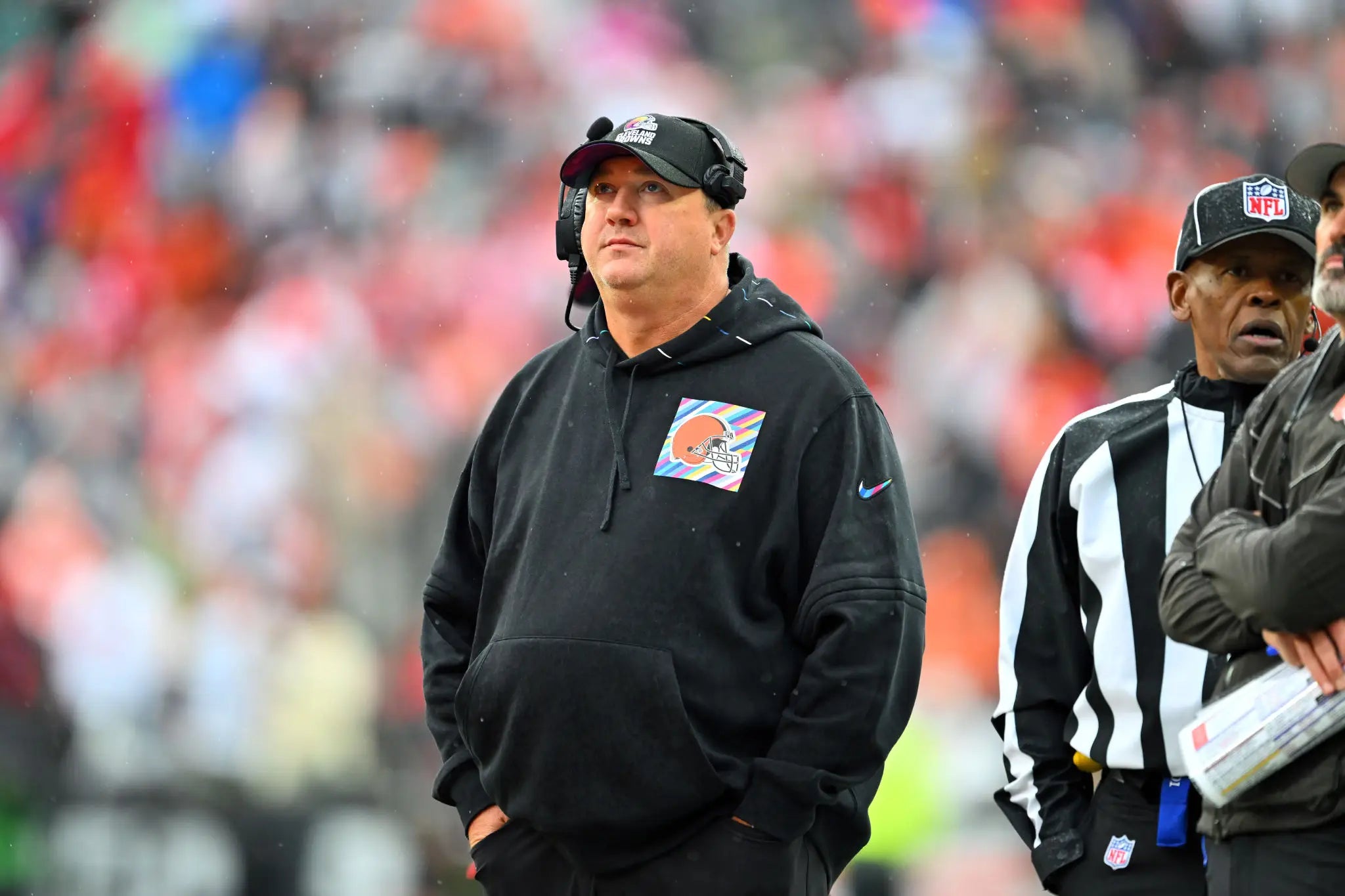It's Clear That the Patriots New Offensive Strategy is to Toss Bombs Like We Haven't Seen in Years
 Jason Miller. Getty Images.
Jason Miller. Getty Images.Alex Van Pelt is a new offensive coordinator coming from a team where he didn't call the plays. In fact, the last time he called plays on a full time basis was with Buffalo in the same year Adam Lambert was getting screwed out of winning American Idol. Which makes it an eternity ago.
Van Pelt also happens to be the coordinator for a rookie coach, both working under a rookie GM, and now tasked with developing a rookie quarterback and a revamped wide receiver depth chart. Which is a long wind up for me to deliver this very obvious pitch: We have no idea what to expect from any of these guys as the Patriots try to make the worst offense in the NFL respectable again. We don't know what AVP's philosophy is or what the organizational strategy is going forward as we try to chuck the last two seasons down the memory hole where they belong.
But we can take an educated guess. Eliot Wolf and Jerod Mayo have each referred to the new approach as a collaborative one. Which means we can take a look at this weekend's draft as a syllabus for this class. The IKEA instructions for how they plan to assemble this offense. The cover sheet attached to their TPS report.
Because with the exception of the selection of blocking tight end Jaheim Bell in the 7th round, all four offensive skill position players they drafted excel at the deep ball. Throwing them. Running after them. Catching them. For better or worse, this is the plan. They're building a deep-threat passing attack the likes of which we've not seen in New England arguably since 2017, when Brandin Cooks and Rob Gronkowski each topped 1,000 yards and Tom Brady was the unanimous MVP.
It's a bold departure from the ball-control attack we've seen been subjected to from the last three OCs. If you define deep balls as any that travel 20+ air yards (which everybody does, so get with it), those throws only accounted for 9.0% of Mac Jones attempts, which was 6th fewest in the league. His passer rating of 72.7 was only 29th best. Bailey Zappe went long on 12.7% of his attempts, which was 12th most. But his passer rating was even lower, at 72.6. And they ranked 36th and 37th respectively in Pro Football Focus passing grades. Making them each finalists for the Deep Safety Association's Man of the Year Award.
But that's all about to change. Or to be more accurate, it'll change if everything goes according plan. Because the plan is without a doubt to start rediscovering that mysterious land that exists 20 yards beyond the line of scrimmage that we've only heard legends about. Beginning, logically enough, with Drake Maye:
Again quoting PFF data, they credited Maye with a paltry 316 yards on screens last year, which was only 67th in the nation. But 1,452 yards on deep balls, which was 2nd. You don't use the No. 3 pick on a player with his predisposition for going long with the intention of employing the strategy of "Dink," or its less celebrated companion piece, "Dunk."
Which brings us to the late round flyer they then took on Joe Milton, whose arm speaks for itself better than advanced stats or my keyboard ever could:
This commitment to attacking the third level and partying like it's 2007 is also self-evident in the wideouts they selected. Beginning with Ja'Lynn Polk in Round 2:
And continuing with Javon Baker two rounds later:
Fun fact: Polk was just behind Baker with 14 such catches.
I need to point out one other thing these guys all have in common. They all need time to develop. As the whole world is sick of hearing by now, Maye is only 21 and needs to work on fundamentals like sloppy footwork and so on. Milton was the 193rd pick and the 12th quarterback taken for a reason. Seven wideouts went in the 1st round and neither Polk nor Baker were ever in that conversation because they're not polished route runners and their games need refinement. Which is all well and good. This time next year we'll all be one year older, but we'll know more about how well they've all progressed under Mayo's staff's coaching.
But what's not in doubt is what the plan is. It's not going to be about carefully working the underneath routes nearly as much as it's going to be a new emphasis on chunk plays. The incessant screens to Ezekiel Elliot (thank you for your service):
… are gone. The days of watching Rhamondre Stevenson haul in a sit route for two yards with a linebacker and a safety draped all over him because they're running downhill all game with no vertical routes to worry about are numbered. It may take a year or two to put it in place, but the blueprint is on the drawing board for a modern NFL passing attack, instead of the 1930s Chicago Cardinals one we've had to endure.
I'd be in danger of having my membership in the Suburban Dad Club revoked if I didn't shoehorn a WWII reference into this. So here goes. In the years before the war, American military planners had to decide what kind of bombers they were going to invest in:
National Museum of the USAF - In the summer of 1935, the Boeing Airplane Co. unveiled its Model 299, a remarkable four-engine, high-speed, long-range, heavy bomber which was eventually designated the B-17 Flying Fortress. This plane, although destined to change the complexion of aerial warfare, initially failed to convince the Army's General Staff of its merits and capabilities. As a result, the General Staff directed that the major portion of funds for the purchase of bombers be spent for cheaper two-engine Douglas B-18s, rather than more costly four-engine B-17s, believing the latter type an expensive and unnecessary luxury.
And in doing so, they left themselves with virtually no weapons system capable of sticking bombs up the collective ass of either Germany or Japan. They learned the hard way, under actual combat conditions, that their fleet didn't have the range needed for the fight, and had to pivot to building B-17s on the fly. The Axis powers simply couldn't match their performance or their production. In time, Allied air superiority became air supremacy. And eventually it won the war. Those patriots learned their lesson. Now it seems like these Patriots are as well.
I love this plan. Now let's just hope they can become Masters of the Air sooner, rather than later. We've been losing this war long enough.


